|
|
|
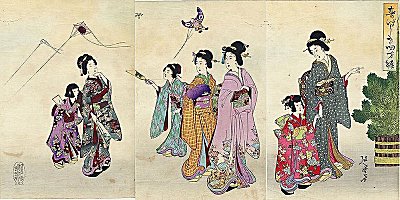 |
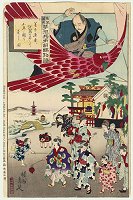
|
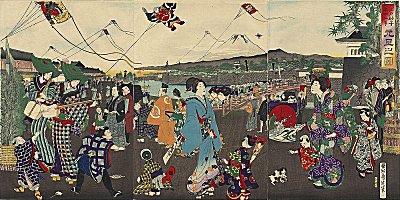 |
CHIKANOBU (1838 - 1912)
"Beauties at New Year's"
|
CHIKANOBU (1838 - 1912)
"Man Riding a Kite"
|
CHIKANOBU (1838 - 1912)
"Flying Kites at New Year's"
|
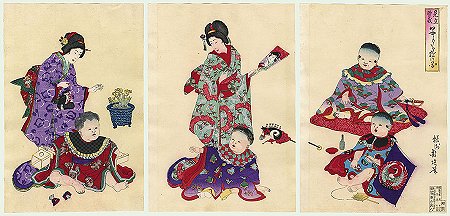
|
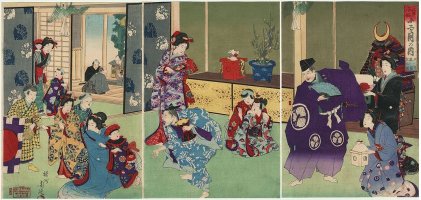
|
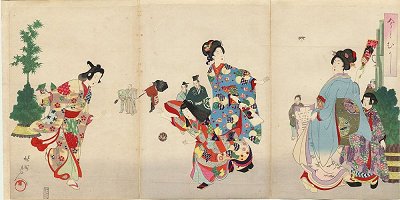
|
CHIKANOBU
(1838 - 1912)
"A Parody of Soga Brothers Performed by
Children" |
CHIKANOBU
(1838 - 1912)
"Celebrating the New Year" |
CHIKANOBU
(1838 - 1912)
"Playing Games at New Year's" |
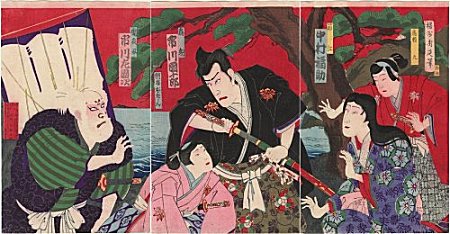 |
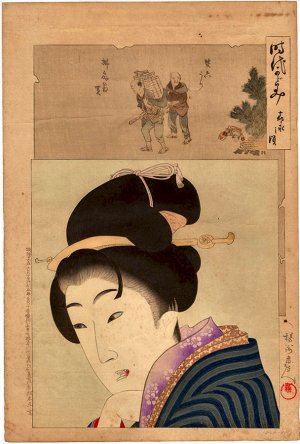
|
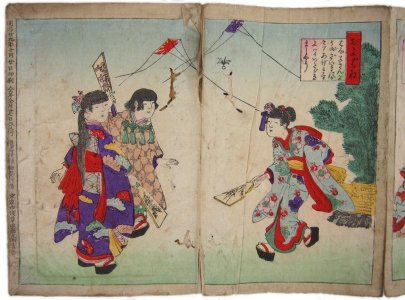
|
CHIKANOBU
(1838 - 1912)
"Tametomo Drawing His Sword" |
CHIKANOBU
(1838 - 1912)
"Mirror of Historical Eras / The Kaei Era"
|
CHIKANOBU
(1838 - 1912)
"Girl's Complete Game Collection"
|
|
|
|
|
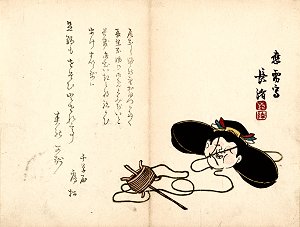
|
|
|
CHOSHO
(active since 1857)
"Otafuku kite Surimono" |
|
|
|
|
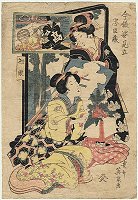
|
|
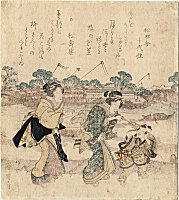
|
EISEN Keisai (1790
- 1848)
"Beauties at New Years" |
|
EISEN Keisai (1790
- 1848)
"Hear no Evil" (Surimono)
Series: Hear no Evil, Speak no Evil,
See no Evil
|
|
|
|
|
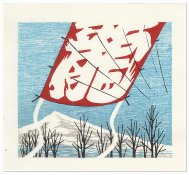
|
|
|
FUJITA Fumio
(*1933)
"Kite Flying on a Winter Day" |
|
| |
|
|
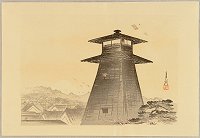
|
|
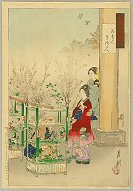 |
GEKKO (1859-1920)
"Light Tower and Kites"
From the untitled series One Hundred Views
of Mt. Fuji
|
|
GEKKO (1859-1920)
"Beauties and the Flower Seller"
|
|
|
|
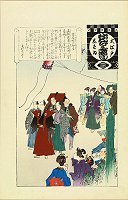
|
|
_Vol.6%C2%A0N.1%20(Shang)-Seite7-und-8-kl.jpg)
|
GINKŌ (active
1870-1900)
"New Year in the Theater District"
Series: Annual Events of the Theater in Edo
|
|
GINKŌ (active
1870-1900)
"Spring Breeze Diary"
Manga: Shunpu Nikki (Vol.6 N.1 (Shang),
pages 7 and 8 |
|
|
|
|
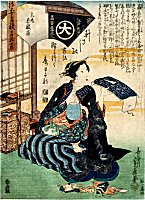
|
|
|
HASEGAWA
Sadanobu-I ( 1809 -1879)
"Daimaru Draperies Store"
|
|
|
|
|
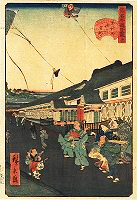 |
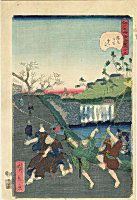 |
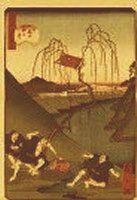 |
HIROKAGE (active ca. 1854 - 1868)
"No. 10, Sakuma-chô outside Kanda"
Series: Comical Views of Famous Places in
Edo
|
HIROKAGE (active ca. 1854 - 1868)
"No. 29, Outside the Gate at Toranomon"
Series: Comical Views of Famous Places in
Edo
|
HIROKAGE (active ca. 1854 - 1868)
"No. 44, Willow Well outside Sakurada Gate"
Series: Comical Views of Famous Places in
Edo
|
|
|
|
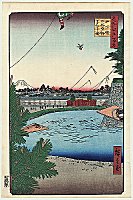 |
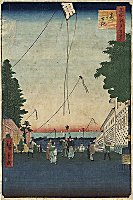 |
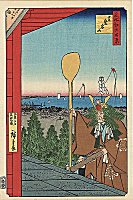 |
HIROSHIGE (1797 - 1858)
"Hibiya and Soto-Sakurada from Yamashita-cho"
(Benkei Moat)
Series: One Hundred Famous Views of Edo
|
HIROSHIGE (1797 - 1858)
"Kasumigaseki"
Series: One Hundred Famous Views of Edo
|
HIROSHIGE (1797 - 1858)
"Mount Atago, Shiba"
Series: One Hundred Famous Views of Edo
|
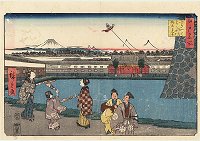
|
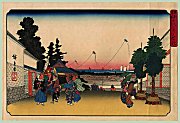
|
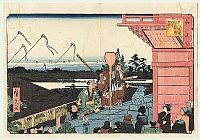 |
HIROSHIGE (1797 - 1858)
"Outside Hibiya, Seen from Sukiya-gashi"
(1858)
(Sukiya-gashi yori Hibi[ya] soto o miru)
Series: Famous Places in Edo "Edo
meisho" (江戸名所)
|
HIROSHIGE (1797 - 1858)
"View of Kasumigaseki"
Series: Famous Places of the eastern
Capital
(東都名所 Kôto Meisho)
|
HIROSHIGE (1797 - 1858)
"Bishamonten Messenger Visiting Mount
Atago in Shiba on the Third Day of the New
Year" (1853)
Series: Famous Places in Edo "Edo
meisho" (江戸名所)
|
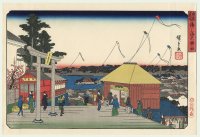
|
|
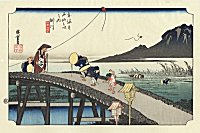 |
HIROSHIGE (1797 -
1858)
"Tenjin-Shrine at Yushima"
Series: Famous Places in Edo "Kôto meisho" (東
都名所)
|
|
HIROSHIGE (1797 -
1858)
"Distant View of Mount Akiba at Kakegawa"
Series: Fifty-three Stations of the
Tokaido; Hoeido Tokaido |
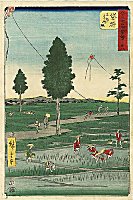
|
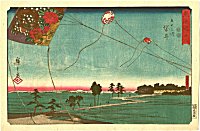
|
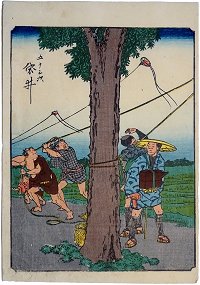
|
HIROSHIGE (1797 -
1858)
"Totomi Kites, a Famous Product of Fukuroi"
Series: Pictures of Famous Places on the
Fifty-three Stations of the Tokaido (Vertical
Tokaido)
|
HIROSHIGE (1797 -
1858)
"No. 28, Fukuroi: Famous Kites of Tôtômi"
Series: Famous Sights of the Fifty-three
Stations of the Tokaido (Reissho
or Horizontal Tokaido)
|
HIROSHIGE (1797 -
1858)
"Fukuroi, Fifty -three Stations
(Jinbutsu or Figure Tokaido)
|
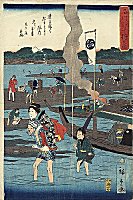
|
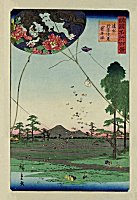
|
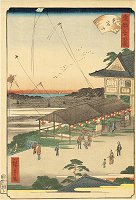 |
HIROSHIGE-II (1826
- 1869)
"At the Shore"
Series: "Famous Sights of the Fifty-three
Stations"
|
HIROSHIGE-II (1826
- 1869)
"Kites and Distant View of Mount Akiba
seen from Fukuroi, Enshu" (1859)
Series: "One Hundred Views of Famous Places
in the Provinces" |
HIROSHIGE-II (1826
- 1869)
"(Kites in the Sky of) Mount Atago
(Atogayama)"
Series: "Thirty-six Views of the Eastern
Capital" |
|
|
|
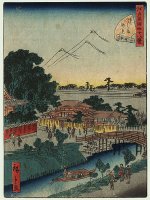 |
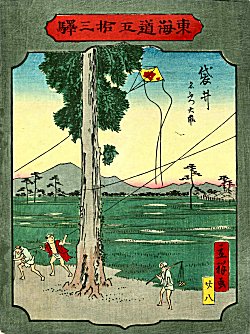
|
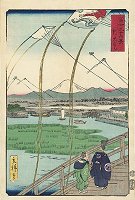 |
HIROSHIGE-II (1826
- 1869)
"Myokendo Temple at Yanagishima" (1860)
Series: "Forty-Eight Famous Views of Edo" |
HIROSHIGE-II (1826
- 1869)
"Fukuroi, The Famous Big Kites"
Series: "Fifty-three Stations of the Tôkaidô
Road" |
HIROSHIGE-II (1826
- 1869)
"Shin Ohashi / New Big Bridge" (1867)
Series: "Thirty-six Views of Fuji"
|
|
|
|
|
|
|
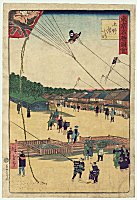 |
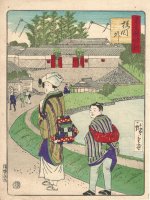
|
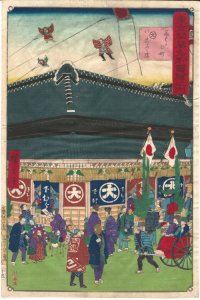
|
HIROSHIGE-III
(1843 - 1894)
"Ueno Hirokoji"
Series: Famous Places in Tokyo |
HIROSHIGE-III
(1843 - 1894)
"Outside Sakurada"
Series: Famous Places in Tokyo
|
HIROSHIGE-III (1843 -
1894)
"Kimono Shop in Hatagocho"
Series: "Illustrations of Famous
Places in Modern Tokyo"
|
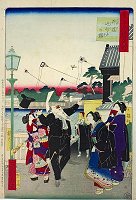
|
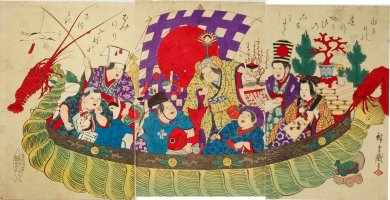
|
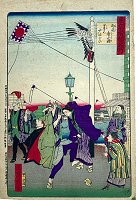
|
HIROSHIGE-III
(1843 - 1894)
"Chasing Feather and Face at Yanagibashi"
Series: "Tokyo's Funny Famous
Places"
|
HIROSHIGE-III
(1843 - 1894)
"Lucky Gods as Children" |
HIROSHIGE-III
(1843 - 1894)
"Bewilderment by a Kite at
Ryogoku Hirokoji Plaza"
Series: "Tokyo's Funny Famous
Places"
|
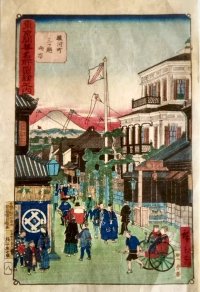
|
|
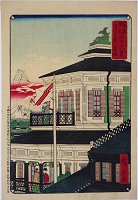
|
HIROSHIGE-III
(1843 - 1894)
"The Mitsukoshi Department Store in
Suruga-cho"
Series: "Illustrated guide to famous
places in Tokyo" |
|
HIROSHIGE-III
(1843 - 1894)
"The Mitsui Bank in Suruga-cho"
Series: "36 Views of Modern Tōkyō"
|
|
|
|
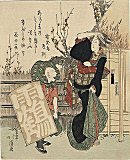 |
|
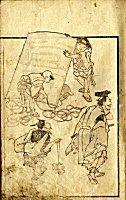
|
HOKKEI (1780 -
1850) (/ Hokusai)
"Beauty and Boy with Kite"
(Surimono) |
|
HOKKEI (1780 -
1850)
"Hokkei-Manga"
(two pages) |
|
|
|
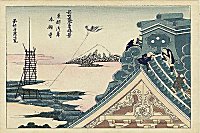 |
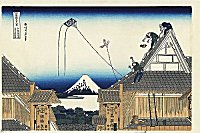 |
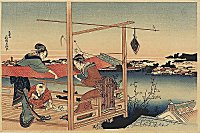 |
HOKUSAI 1760 - 1849)
"Honganji Temple at Asakusa in Edo"
Series: Thirty-six Views of Fuji
|
HOKUSAI (1760 - 1849)
"View of the Mitsui Stores at Surugacho in
Edo"
Series: The Thirty-six Views of Fuji
|
HOKUSAI (1760 - 1849)
"Drying a Bolt of Cloth"
|
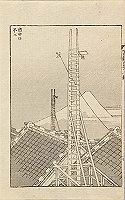 |
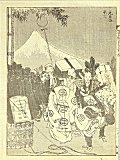 |
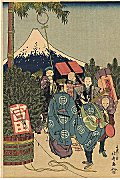 |
HOKUSAI (1760 -
1849)
Shichu Station and View of Mt. Fuji
Manga: "Fugaku Hyakkei" (100 Views of
Mt.Fuji) |
HOKUSAI
(1760 - 1849)
Travelers and View of Mt. Fuji
Manga: "Fugaku Hyakkei" (100 Views of
Mt.Fuji) |
HOKUSAI (1760 -
1849)
Travelers and View of Mt. Fuji
Series: "Fugaku Hyakkei" (100 Views
of Mt.Fuji) |
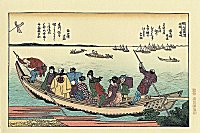 |

|
HOKUSAI (1760 - 1849)
"Banks of Sumida River" (New Year's
Ferry)
|
HOKUSAI (1760 - 1849)
"Banks of Sumida River at a glance"
(Manga Book)
|
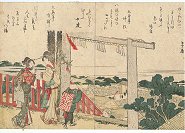 |
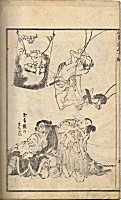
|
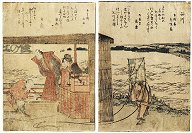 |
HOKUSAI (1760 - 1849)
"Gate of the Shrine"
|
HOKUSAI (1760 - 1849)
"Hokusai-Manga Vol. 11"
|
HOKUSAI (1760 - 1849)
"Tea Stand and Boy with Kite" /
"Shinagawa: Boy with Kite")
Series: Fine Views of the Eastern Capital
at a Glance
|
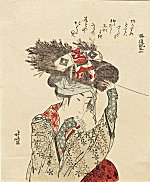
|
|
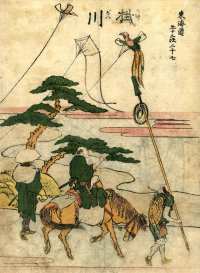
|
HOKUSAI
(1760 - 1849)
"Women of Ohara"
(Surimono) |
|
HOKUSAI
(1760 - 1849)
"Kakegawa Station"
Series: 53 Stations of the Tokaido (1806 ed.)
|
|
|
|
|
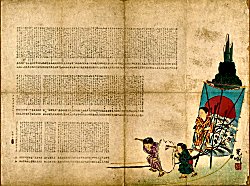
|
|
|
IIJIMA Koga (1829
- 1900)
"Three Boys and a Kite at New Year's Day"
(Surimono)
|
|
|
|
|
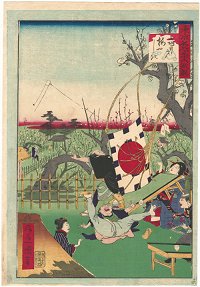
|
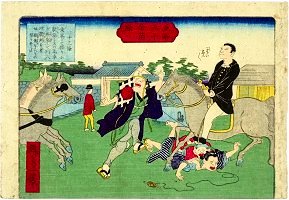
|
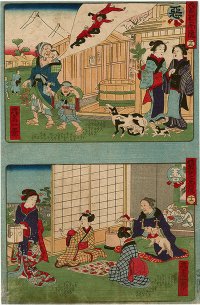
|
IKKEI
(active 1865 ~ 1873)
"Kameido Plum Garden"
Series: Thirty-six Amusing Views of
Famous Places in Tokyo |
IKKEI
(active 1865 ~ 1873)
"50 Explanatory Illustrations, No13 of
50"
Series: A comprehensive
explanation of over 50 articles
|
IKKEI
(active 1865 ~ 1873)
"The Double Mirror of Moral Teachings for
Girls, No. 12"
Series: The Double Mirror of
Moral Teachings for Girls |
|
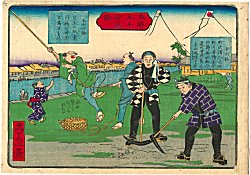
|
|
|
IKKEI
(active 1865 ~ 1873)
"50 Explanatory Illustrations, No16
of 50"
Series: A comprehensive
explanation of over 50 articles
|
|
|
|
|
|
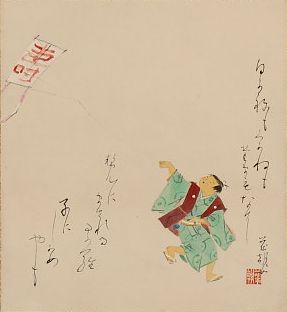
|
|
|
IKUTA Kachojo
(1889 - 1978)
"Flying a Kite"
(Kakemono) |
|
|
|
|
|
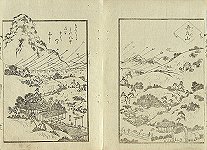 |
|
|
Bunsai ISONO Nobuharu ((active
1816-1847))
"Mu Take"
(from Souvenir Manga "Nagasaki Miyage") |
|
|
|
|
|
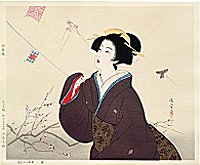
|
|
|
KABURAGI Kiyokata
(1886-1972)
"First Easterly Winds"
|
|
|
|
|
|
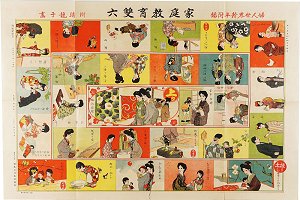
|
|
|
KAWABATA Ryushi
(1885-1966)
"Home Education Sugoroku" |
|
|
|
|
|
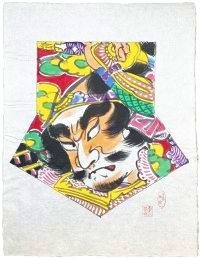
|
|
|
KATO Tatsusaburō
(1899~1975)
Series: "風, Kites of Japan. A Vanishing
Art" |
|
|
|
|
|
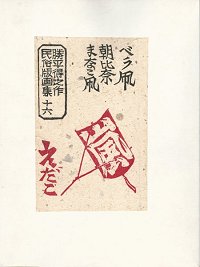
|
|
|
KATSUHIRA Tokushi
(1904 - 1971)
"Pictures of Kites, No. 16"
Series: Folk Art Prints
|
|
|
|
|
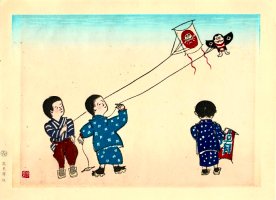 |
|
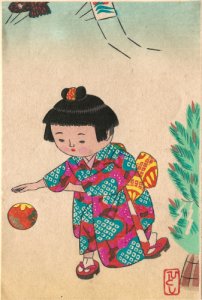
|
KIYOHARA Hitoshi
(1896 - 1956)
"Kite Flying"
Series: Folk Art Prints |
|
KIYOHARA Hitoshi
(1896 - 1956)
"Kite Flying"
Christmas and New Year Card
|
|
|
|
|
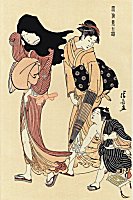 |
|
|
Torii KIYONAGA (1752 - 1815)
"The Entangled Kite Line"
Series: Customs of the East |
|
|
|
|
|
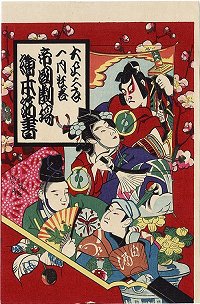
|
|
|
Torii KIYOTADA VII
(1875 - 1941)
'Actors on a Battledore and a Kite' |
|
|
|
|
|
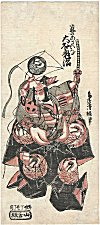
|
|
|
Torii KIYOTSUNE
(active 1751 - 1781)
"Portrait of the Actor Otani Oniji-II"
|
|
|
|
|
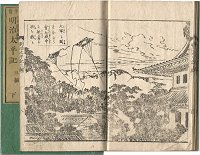
|
|
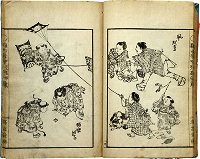
|
KOBAYASHI Eitaku
(1843 - 1890)
"Meiji Taiheiki - Vol. 3, Part I"
Series: Meiji Chronicle of Great Peace
|
|
KOBAYASHI Eitaku
(1843 - 1890)
"Learning from Ancient Annual Events"
|
|
|
|
|
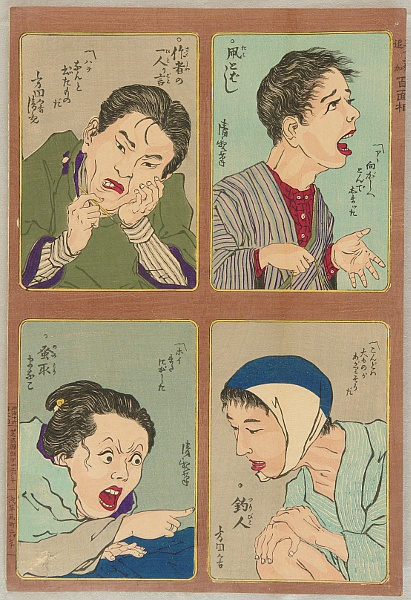 |
|
|
KOBAYASHI Kiyochika
(1847- 1915)
"Additional : One Hundred Faces -
Writer, Kite Flyer,
Looking for Fleas, Angler"
Series: "Tsuika Hyaku Men So" |
|
|
|
|
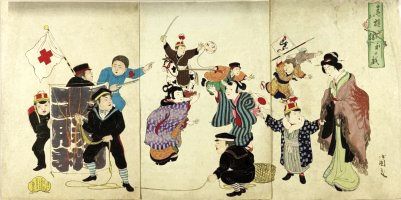
|
|
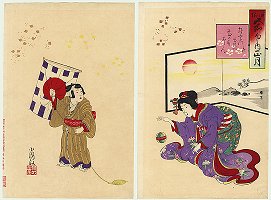
|
KOKUNIMASA (1874 -
1944)
"Springtime Drama of Playing Victory"
|
|
KOKUNIMASA (1874 - 1944)
"Five Yearly Festivals - "Shogatsu" (The New
Year's Day) Flying kite, battledore and hand
ball", ca. 1890
Series: "Fuzoku Goseck no Uchi" (Customs and
Manners) |
|
|
|

|
|
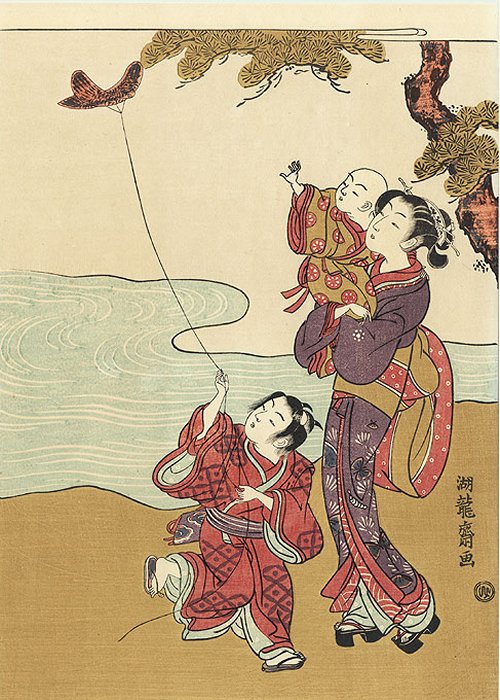
|
KORYOSAI
(1735 - 1790)
"Kite Flying" |
|
KORYOSAI
(1735 - 1790)
"Flying a Kite" |
|
|
|
|
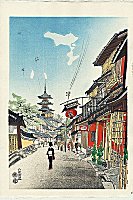 |
|
|
KOTOZUKA (1906 - 1979)
"Near Yatsusaka On New Year's Day (January)"
|
|
|
|
|
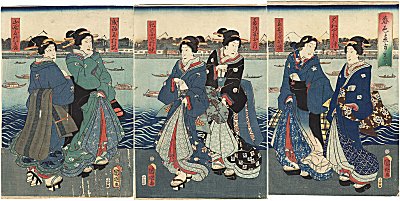
|
|
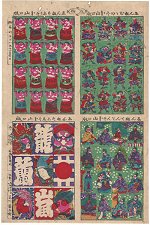
|
KUNIAKI-II
(1835 - 1888)
"Beauties, Enjoying a Spring Stroll" |
|
KUNIAKI-II
(1835 - 1888)
"Kites All Over" |
|
|
|
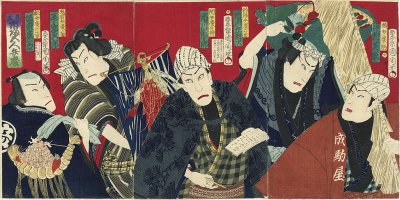 |
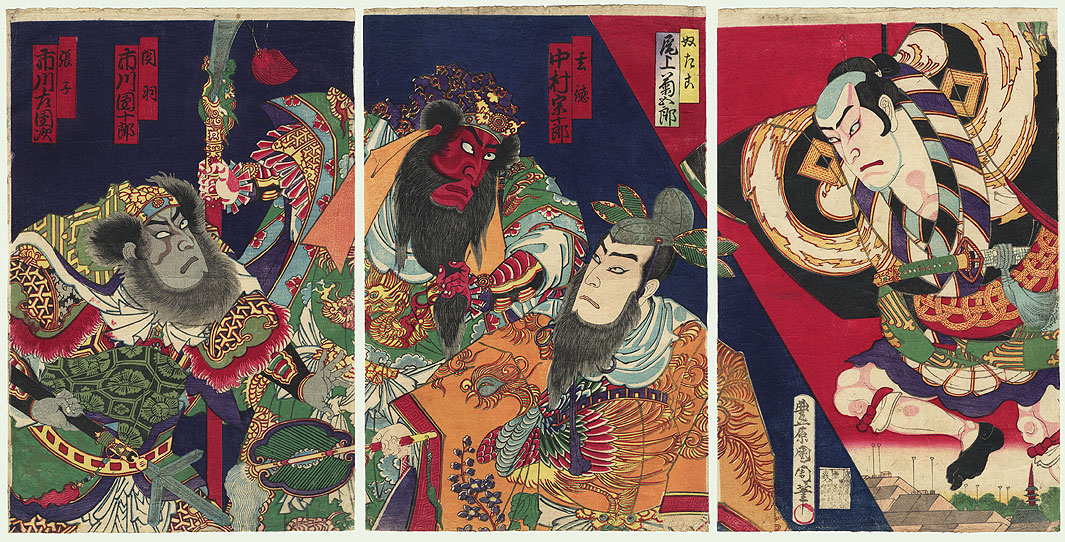 |
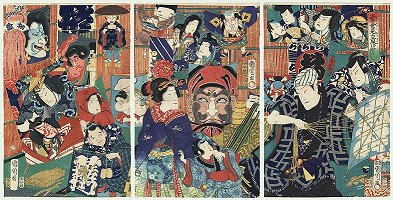 |
KUNICHIKA (1835 - 1900)
"Celebrating New Year's Day"
|
KUNICHIKA (1835 - 1900)
"Three Kingdoms Leaders and Man Kite"
|
KUNICHIKA (1835 - 1900)
"Modern Parody of an Exclusive Selection of
Kites"
|
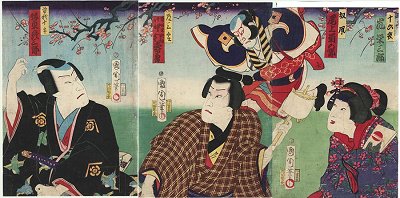 |
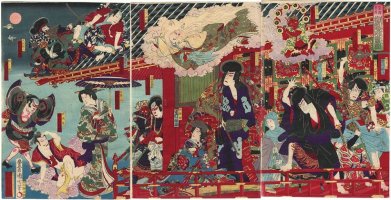 |
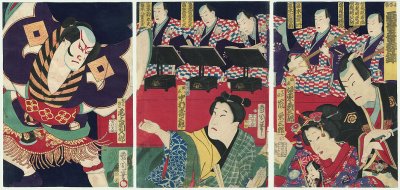 |
KUNICHIKA (1835 - 1900)
"Soga Juro and Man Kite" |
KUNICHIKA (1835 - 1900)
"Pride of the Empire: First Sunshine and
Clouds"
|
KUNICHIKA (1835 - 1900)
"Spring Brocade Dance-Drama in Picture and
Sound" |
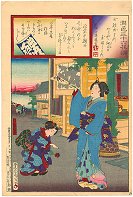 |
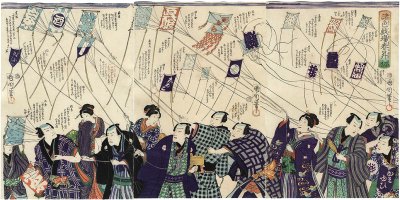 |
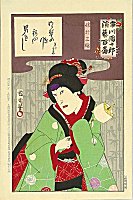 |
KUNICHIKA (1835 -
1900)
"Senkichi and the Sanko Playing with New
Year's Toys"
Poem by Minamoto Muneyuki Ason
Series: Embellishments for a Set of 36
Flowers
(36 Immortal Poets) |
KUNICHIKA (1835 -
1900)
"Flying Kites in Spring" |
KUNICHIKA (1835 -
1900)
"Musume Omiwa"
Series: "100 Kabuki Roles by Ichikawa
Danjuro"
|
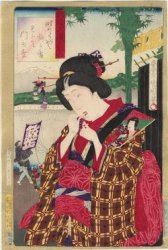 |
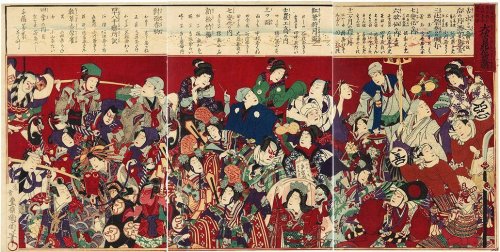
|
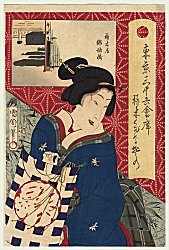 |
KUNICHIKA (1835 -
1900)
"Beauty at New Year's"
Series: "Newly Woven Brocades: Musashi
Beauties" |
KUNICHIKA (1835 -
1900)
"Kabuki Characters" |
KUNICHIKA (1835 -
1900)
"Beauty with a Kite"
Series: Thirty-six Tokyo Restaurants
|
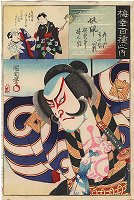
|
|
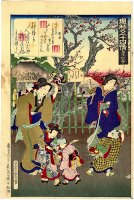
|
KUNICHIKA (1835 -
1900)
"Onoe Kikugoro-V as a Yakko-Kite"
Series: 100 Rôles of Baiko |
|
KUNICHIKA (1835 -
1900)
"Sekiya"
Series: The Fifty-four
Chapters in Modern Times
|
|
|
|
|
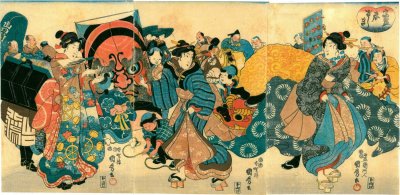 |
|
|
KUNIMARU (active 1850 -
1875)
"Todays Spring Solistice"
|
|
|
|
|
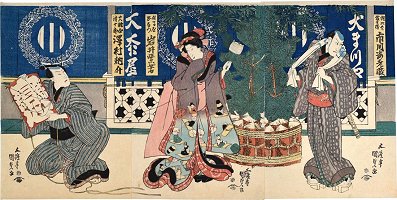
|
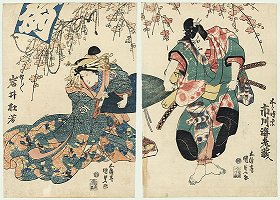 |
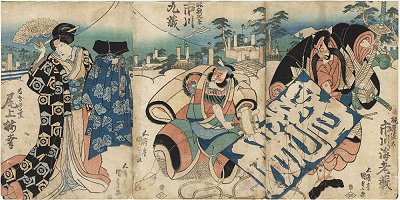 |
KUNISADA (Toyokuni-III) (1786 - 1864)
"A Scene from the Revenge of the Soga
Brothers"
|
KUNISADA (Toyokuni-III) (1786 - 1864)
"Soga Goro Tokimune Arguing with a Beauty"
|
KUNISADA (Toyokuni-III) (1786 - 1864)
"Tale of the Soga Brothers"
|
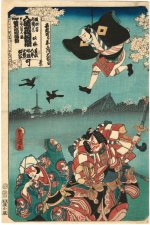 |
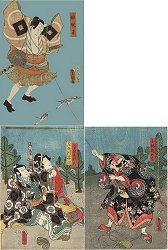
|
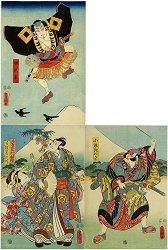
|
KUNISADA
(Toyokuni-III) (1786 - 1864)
"Yakko"
Series: List of Titles of Dance Forms
|
KUNISADA
(Toyokuni-III) (1786 - 1864)
"Ordinary Yakko Kite",
(Tsujioka-ya Bunsuke Edition)
|
KUNISADA
(Toyokuni-III) (1786 - 1864)
"Ordinary Yakko Kite"
(Maruya Edition)
|
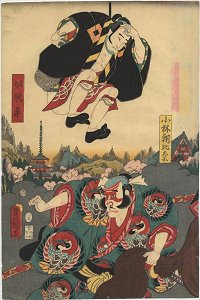 |
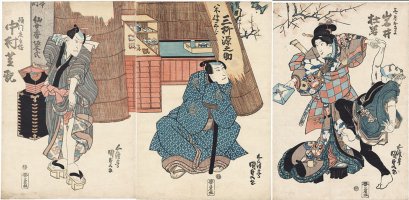
|
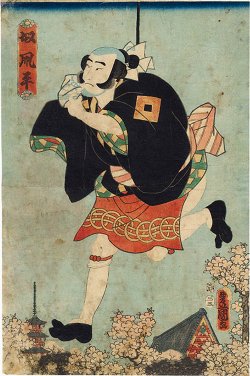
|
KUNISADA
(Toyokuni-III) (1786 - 1864)
"Ordinary Yakko Kite" (Asahina
Kobayashi)
|
KUNISADA
(Toyokuni-III) (1786 - 1864)
"The First Performance of the Period of
Aikyou Soga" (1833) |
KUNISADA
(Toyokuni-III) (1786 - 1864)
"Ordinary Yakko Kite" (1857)
|
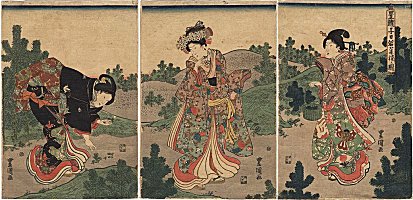 |
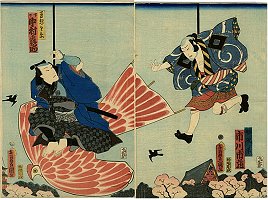 |
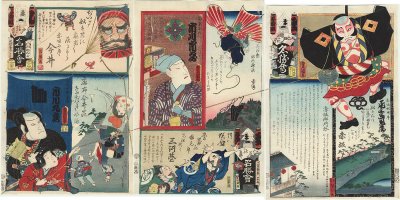 |
KUNISADA
(Toyokuni-III) (1786 - 1864)
"Gathering Spring Greens" |
KUNISADA
(Toyokuni-III) (1786 - 1864)
"Soldier's Dream and Yakko Kite"
|
KUNISADA
(Toyokuni-III) (1786 - 1864)
Kite Flying Triptych, 1863
Series: Flowers of Edo and Views of Famous
Places
|
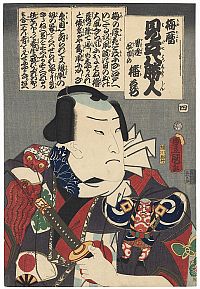 |
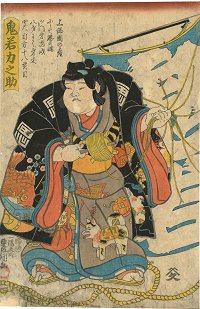 |
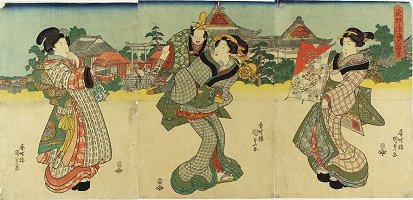
|
KUNISADA
(Toyokuni-III) (1786 - 1864)
"Street Knight with a Man Kite Kimono"
|
KUNISADA
(Toyokuni-III) (1786 - 1864)
"Oniwaka Rikinosuke holding a Kite"
|
KUNISADA
(Toyokuni-III) (1786 - 1864)
"Yushima Tenmangu Shrine in the Eastern
Capital" |
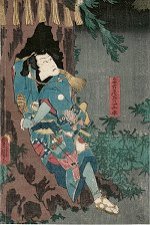 |
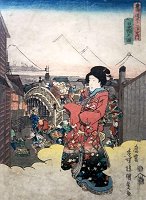
|
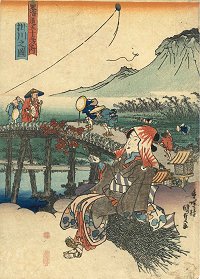 |
KUNISADA
(Toyokuni-III) (1786 - 1864)
"Emerging from a Tree Trunk"
|
KUNISADA
(Toyokuni-III) (1786 - 1864)
"Edo Nihonbashi Station"
Series: Fifty-three Stations of the Tôkaidô Road
|
KUNISADA
(Toyokuni-III) (1786 - 1864)
"Kakegawa-Station"
Series: Bijin Tokaido
|
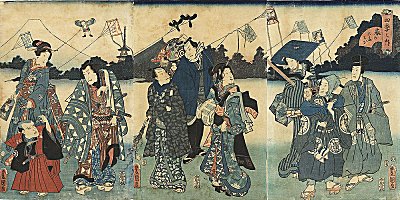
|
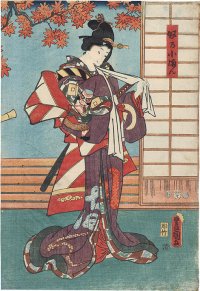
|
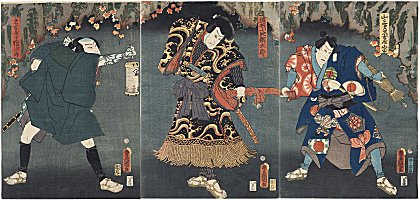
|
KUNISADA
(Toyokuni-III) (1786 - 1864)
"New Year's Day Kite Flying" |
KUNISADA
(Toyokuni-III) (1786 - 1864)
"Bijin with Kite Kimono"
|
KUNISADA
(Toyokuni-III) (1786 - 1864)
"Scene from Chiyo no Haru Tosa-e no Saya-ate"
|
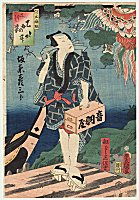 |
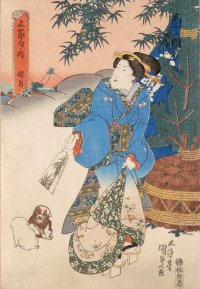
|
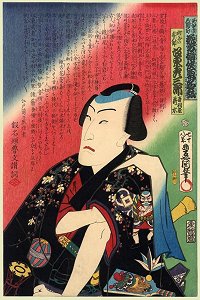
|
KUNISADA
(Toyokuni-III) (1786 - 1864)
"Kite and Courtesan"
|
KUNISADA
(Toyokuni-III) (1786 - 1864)
"Mutsuki"
|
KUNISADA
(Toyokuni-III) (1786 - 1864)
"Bando Hikosaburo as Aratamano Harugoro"
|
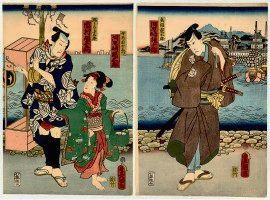
|
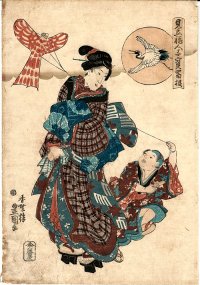
|
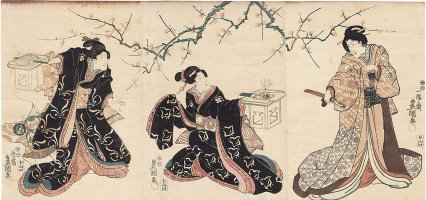
|
KUNISADA
(Toyokuni-III) (1786 - 1864)
"Toy Vendor and Girl with Clam Basket"
|
KUNISADA
(Toyokuni-III) (1786 - 1864)
"Children Imitating the Seven Gods of
Good Fortune" (Jurojin)
|
KUNISADA
(Toyokuni-III) (1786 - 1864)
"Beauties beneath a Plum Tree" |
|
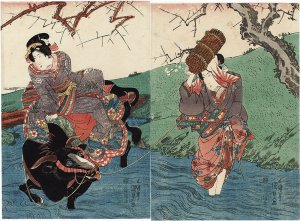
|
|
|
KUNISADA
(Toyokuni-III) (1786 - 1864)
"Crossing a Ford"
|
|
|
|
|
 |
|
KUNISADA-II (1823 - 1880)
"Five Heroes"
|
|
|
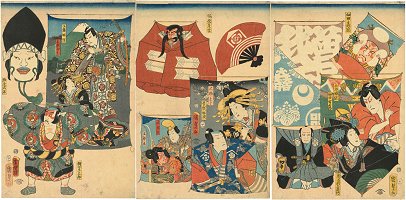 |
|
|
KUNISADA-II (1823
- 1880)
"Actor Picture Kites"
|
|
|
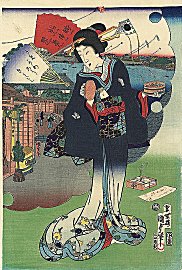 |
|
|
KUNISADA-II
(1823 - 1880)
"Beauty at New Year's"
|
|
|
|
|
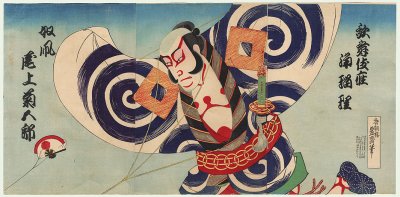 |
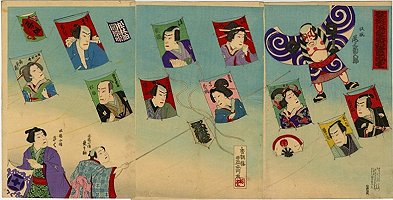 |
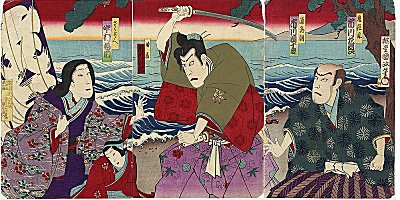 |
KUNISADA-III (1848 - 1920)
"Onoe Kikugoro Vth as a Yakko-dako" |
KUNISADA-III (1848 - 1920)
"Kabuki Stars Flying High"
|
KUNISADA-III (1848 - 1920)
"Women with Kite"
|
|
|
|
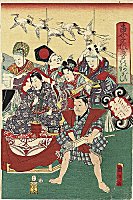 |
|
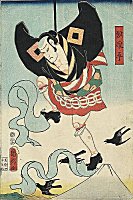 |
KUNISATO (acive until1858)
"Children of the East Playing in Springtime"
,1854
|
|
KUNISATO (acive until1858)
"Kabuki Scene - Man Kite" (Yakko)
|
|
|
|
|
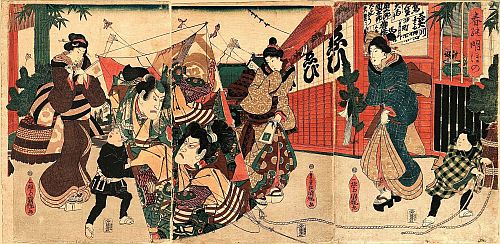
|
|
|
KUNITERU (1808 -
1876)
"Spring Sunrise"
|
|
|
|
|
|
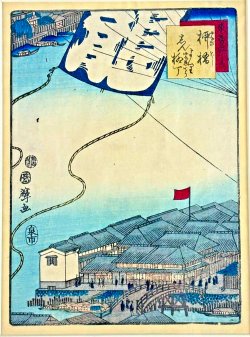
|
|
|
KUNITERU-II (1829
- 1874)
"From Yanagibashi to ShinYanagicho"
|
|
|
|
|
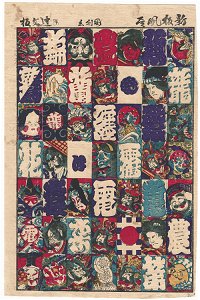
|
|
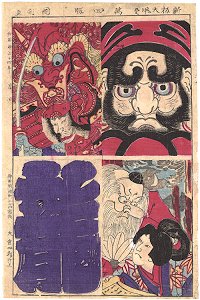
|
KUNITOSHI (1847 -
1899)
"New Comprehensive Collection of Kites "
|
|
KUNITOSHI (1847 -
1899)
"New Collection of Giant Kites "
|
|
|
|
|
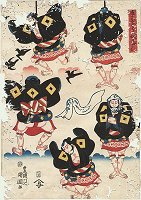 |
|
|
KUNITSUNA (1805 -
1868)
"Yakko-Dako"
|
|
|
|
|
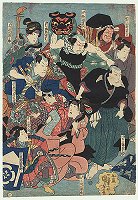 |
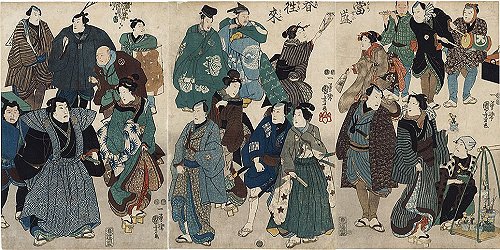
|
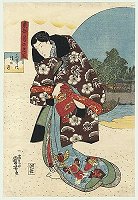 |
KUNIYOSHI (1797 - 1861)
"Scene from the Soga Brothers"
|
KUNIYOSHI (1797 - 1861)
"New Year Visits in the ModernWorld"
1847~1848
|
KUNIYOSHI (1797 - 1861)
"The Almost-full Moon at Masaki"
|
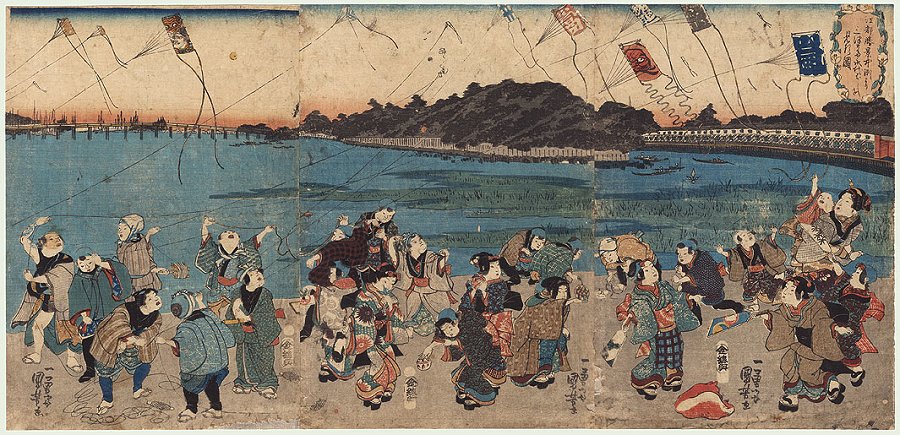 |
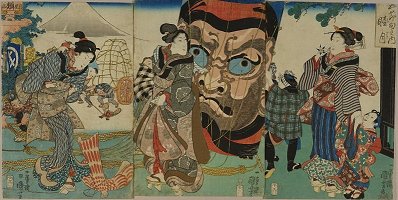 |
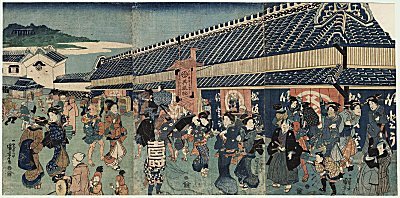 |
KUNIYOSHI
(1797 - 1861)
"A View of Mitsumata and Eitai Bridge Seen
from Susaki" 1843
Series: Famous Views of Edo
|
KUNIYOSHI
(1797 - 1861)
"Mutsuki" (First Month) 1844
Series: Gosekku no uchi (Five Festivals) |
KUNIYOSHI (1797 -
1861)
"Busy Street Scene"
1843 - 1846 |
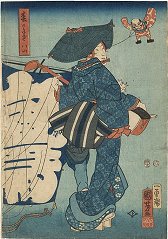 |
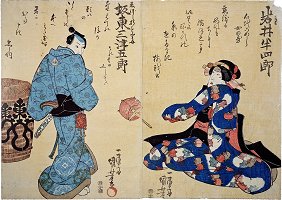 |
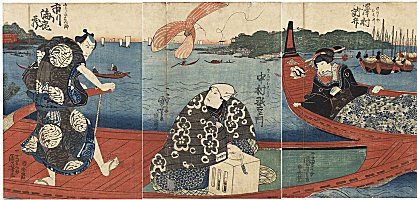 |
KUNIYOSHI (1797 -
1861)
"Musician and Kites at Haruno"
1854 |
KUNIYOSHI (1797 -
1861)
"Omiwa"
1854 |
KUNIYOSHI (1797 -
1861)
'Ferry, Passing a Beauty in a Boat'
1854 |
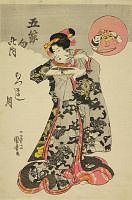 |
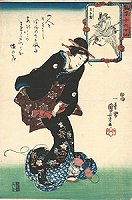
|
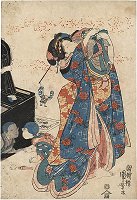 |
KUNIYOSHI (1797 -
1861)
"Mutsumashitsuki"
1830 |
KUNIYOSHI (1797 -
1861)
"Oshiky" Beauty st0pped by a Crane
Kite"
1848
|
KUNIYOSHI (1797 -
1861)
"Beauty and Children with Toys"
1854 |
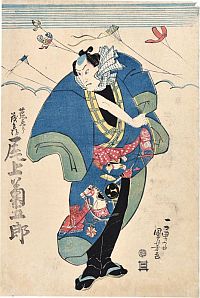
|
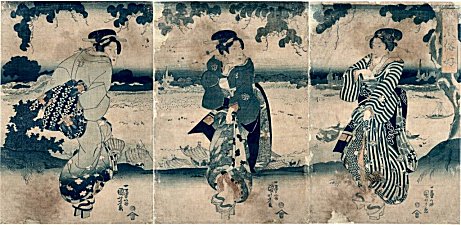
|
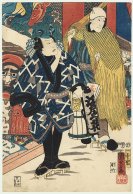
|
KUNIYOSHI (1797 -
1861)
"Onoe Kikugoro-III as Aragoro Mohei"
1832~1835
|
KUNIYOSHI (1797 -
1861)
"Favourite Customs of the Present Day"
1830
|
KUNIYOSHI
(1797 - 1861)
"Crowds at the Market at Asakusa
Temple" |
|
|
|
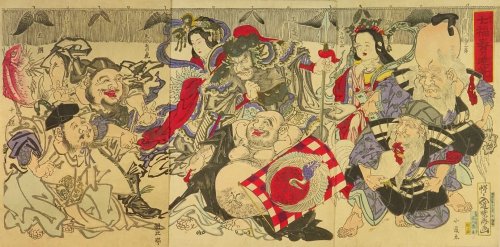
|
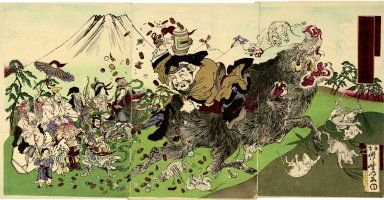
|
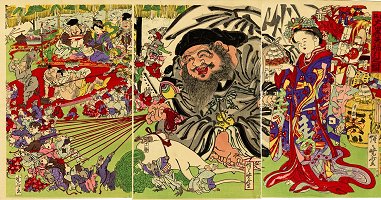 |
KYOSAI (1831 -
1889)
"Seven Lucky Deities"
prior to 1884 |
KYOSAI (1831 -
1889)
"Seven Gods of Good Fortune at the Foot of
Mount Fuji"
|
KYOSAI (1831 -
1889)
"God of Wealth Daikokoten's Lucky Draw"
prior to 1889 |
|
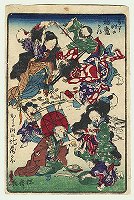
|
|
|
KYOSAI (1831 -
1889)
"Angry Woman and Boy with a Kite"
(Manga) |
|
|
|
|
|
|
|
|
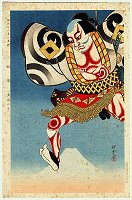 |
|
|
MASAMITSU Ota
(1892 - 1975)
"Actor as a Yakko-dako Kite"
(1943) |
|
|
|
|
|
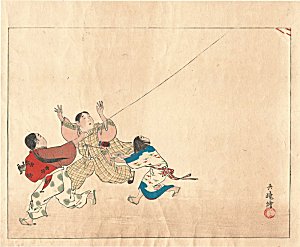
|
|
|
MIYAKE Gogyou
(1868 - 1919)
"Kite Flying"
(1893)
|
|
|
|
|
|
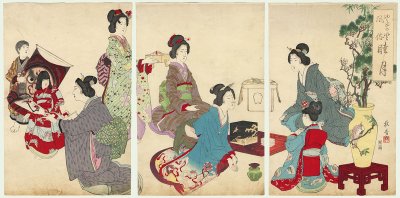 |
|
|
NAKAMURA Shūkō
(active circa 1894 - 1904)
"Festival Celebrations at New Year"
|
|
|
|
|
|
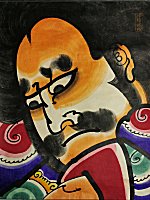
|
|
|
NAKANO Keizō
(1929 - 2006)
"Tsugaru Kite Picture"
|
|
|
|
|
|
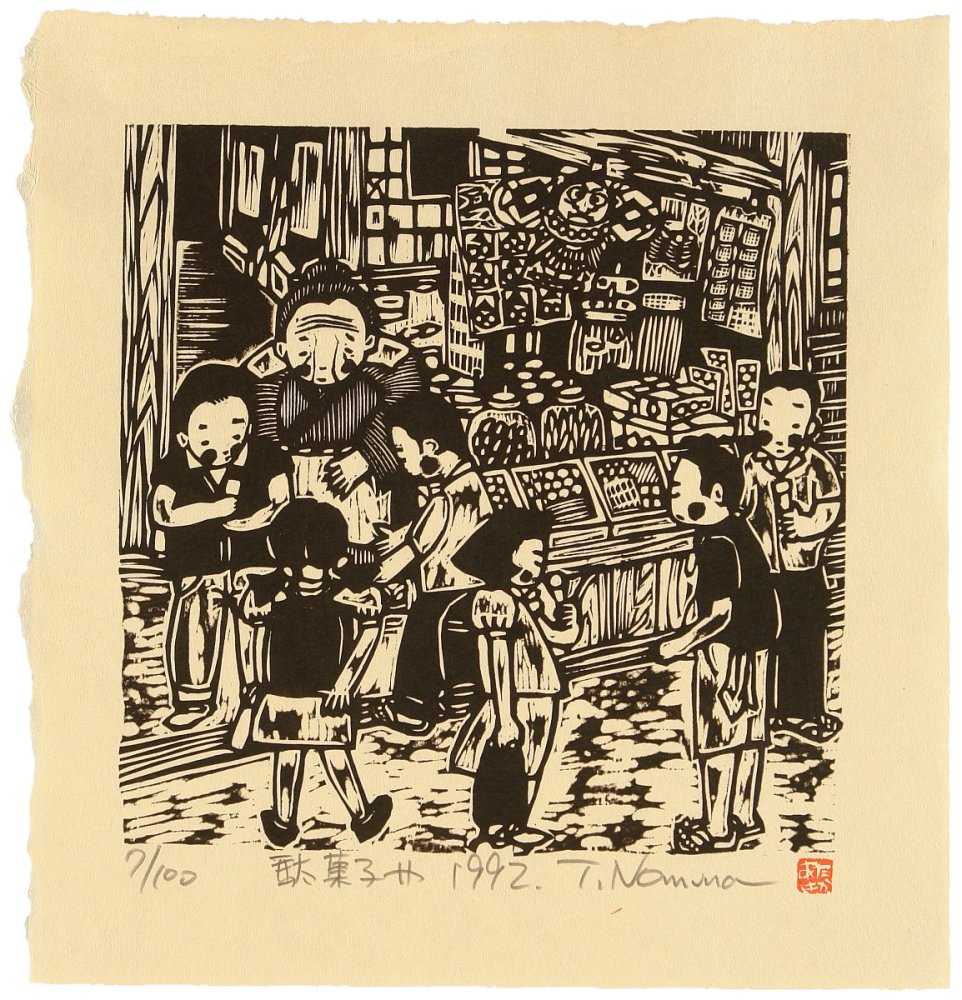 |
|
|
NOMURA Takaaki (born 1949)
"Memory of Childhood - Miscellaneous Sweets
Store - Dagashiya"
|
|
|
|
|
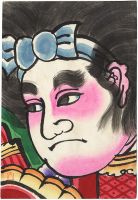
|
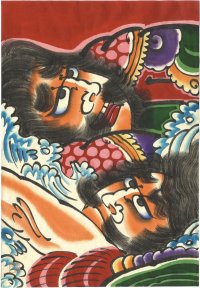
|
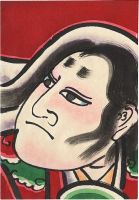
|
Ose Tokuichi
"Warrior (Momotaro)"
(Shin Hanga)
|
Ose Tokuichi (20th
century)
"Tsugaru Kite Painting" |
Ose Tokuichi
"Warrior (Samurai)"
(Shin Hanga)
|
|
|
|
|
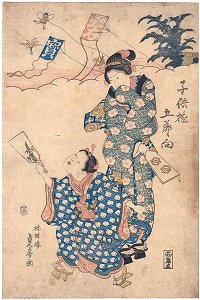 |
|
|
SADAFUSA
(active 1818 ~ 1850)
"Children's Play"
Series: Five Festivals
|
|
|
|
|
|
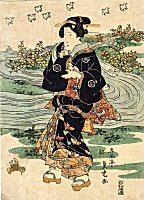
|
|
|
SADATORA (active
1818 ~ 1845)
"Parody of Daikoku"
Series: |
|
|
|
|
|
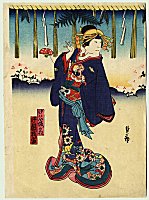 |
|
|
SADAHIRO-II
(Hirosada-II) (1838 - 1918)
"Beauty at New Year's"
|
|
|
|
|
|
 |
|
|
SANO Takao (b. 1941)
"Kites in the
Blue Sky"
|
|
|
|
|
|
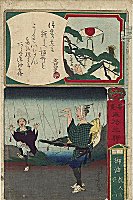 |
|
|
SEIKICHI (1855 - 1903)
"Goyu in Mikawa Province"
Series: Calligraphy and Pictures for the
Fifty-three Stations of the Tokaido, 1872
|
|
|
|
|
|
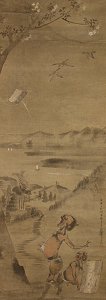
|
|
|
SHIBA Kokan (1747-
1818)
"Oni Flying Kites" 1789
(Kakemono)
|
|
|
|
|
|

|
|
|
Kitao SHIGEMASA
(1739 - 1823)
"First Month" 1790
Series: unnamed series of "Twelve Months"
|
|
|
|
|
|
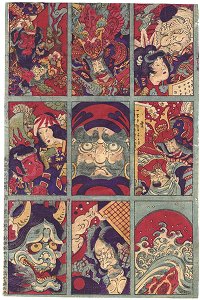
|
|
|
SHIMIZU Kahei (b.
19th century)
'Collection of
Kites'
|
|
|
|
|
|
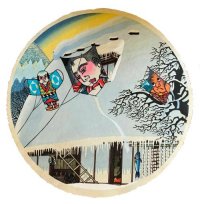
|
|
|
SHIMIZU Toru (b. 1938)
"Kite Flying"
|
|
|
|
|
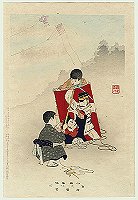 |
|
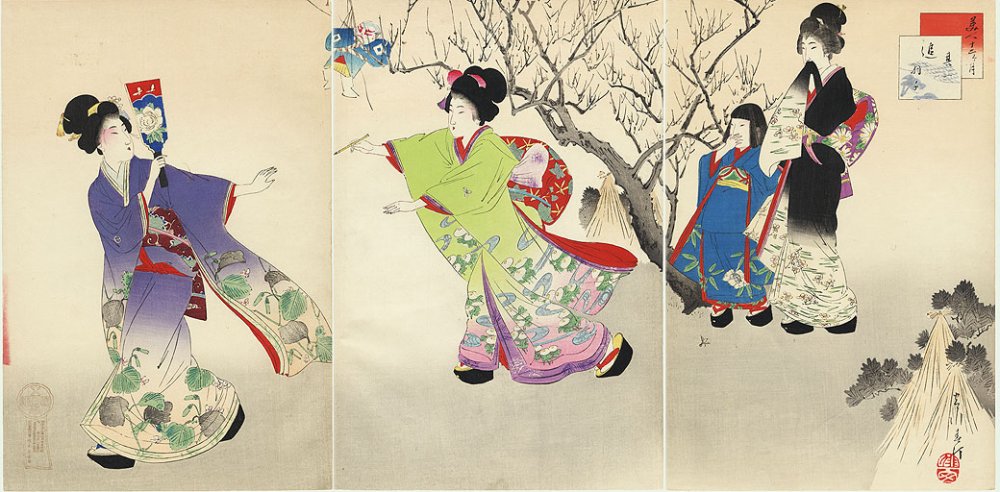 |
SHUNTEI (1873 - 1914)
" Flying Kites"
Series: Children's Manners and Customs
(Kodomo fuzoku) |
|
SHUNTEI (1873 - 1914)
"January: The Shuttlecock"
Series: Twelve Months of Beauties
(Bijin Ju-ni ka Getsu)
|
|
|
|
|
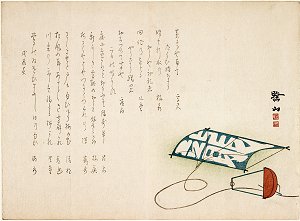
|
|
|
SUIZAN
(active1860ies)
"New Years Kite Surimono"
|
|
|
|
|
|
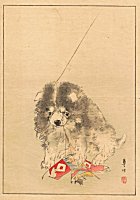
|
|
|
SUZUKI Kason (1860
- 1919)
"Puppy with Yakko Kite"
|
|
|
|
|
|
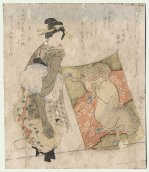 |
|
|
TAITO Katsushika
(TAITO-II) (active ca. 1810 - 1853)
"Geisha and Kite"
(Surimono)
|
|
|
|
|
|
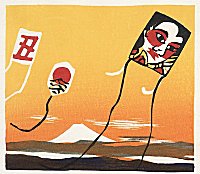 |
|
|
TAKAGI Shiro (1934
- 1998)
"New Year's Day Kites and Mt. Fuji"
|
|
|
|
|
|
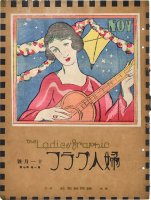
|
|
|
TAKAKEHISA Yumeiji
(1884 - 1934)
"Autumn Tune"
|
|
|
|
|
|
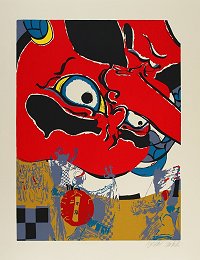 |
|
|
TANAKA Masaaki
(*1947),
"Flying Large Kites in Hamamatsu"
|
|
|
|
|
|
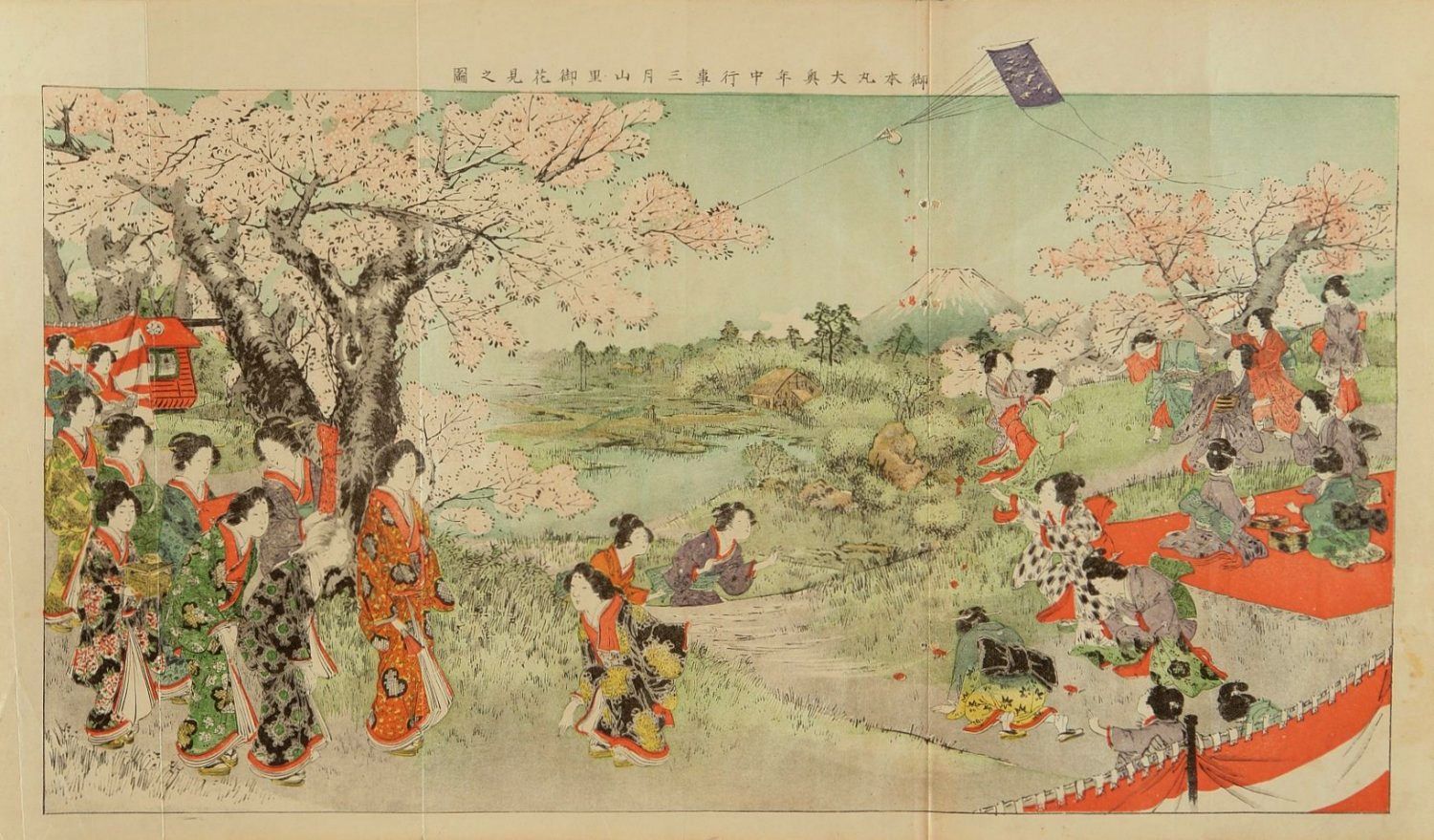 |
|
|
TERAZAKI Kogyo
(1866-1919)
"Cherry Blossoms Viewing - Party and Kite"
|
|
|
|
|
|
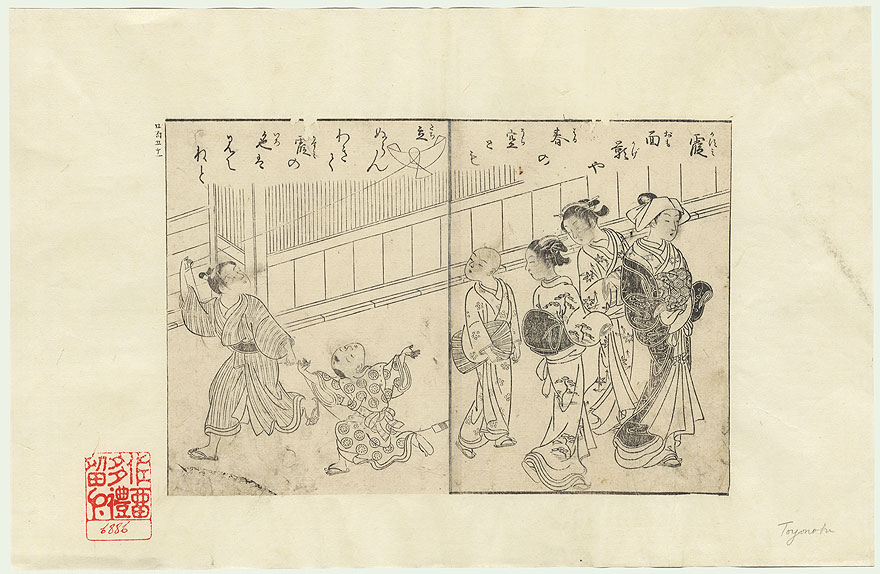 |
|
|
TOYONOBU (1711 -
1785)
"Boys Flying a Kite" |
|
|
|
|
|
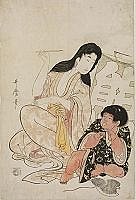 |
|
|
UTAMARO
(1753 - 1806)
"Yamauba and Kintarō
with a Kite"
|
|
|
|
|
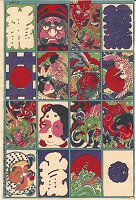
|
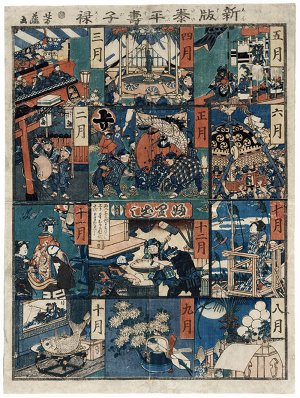
|
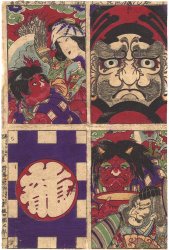
|
YOSHIFUJI (1828 -
1887)
"Toy Print" |
YOSHIFUJI (1828
- 1887)
"Twelve Month Sogoroku" |
YOSHIFUJI (1828 -
1887)
"New Collection of Kites" |
|
|
|
|
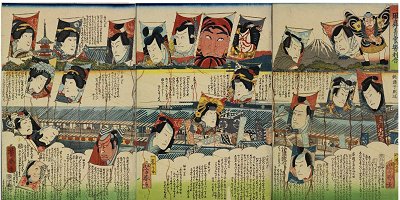
|
|
|
YOSHIHARU (1828 -
1888)
"Kites Rising in the Blue Sky"
|
|
|
|
|
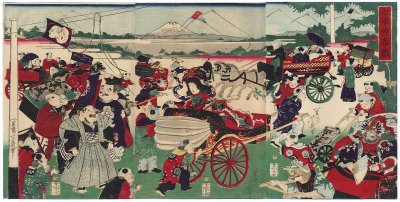 |
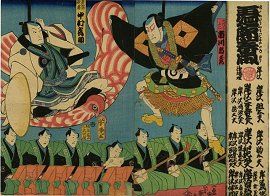
|
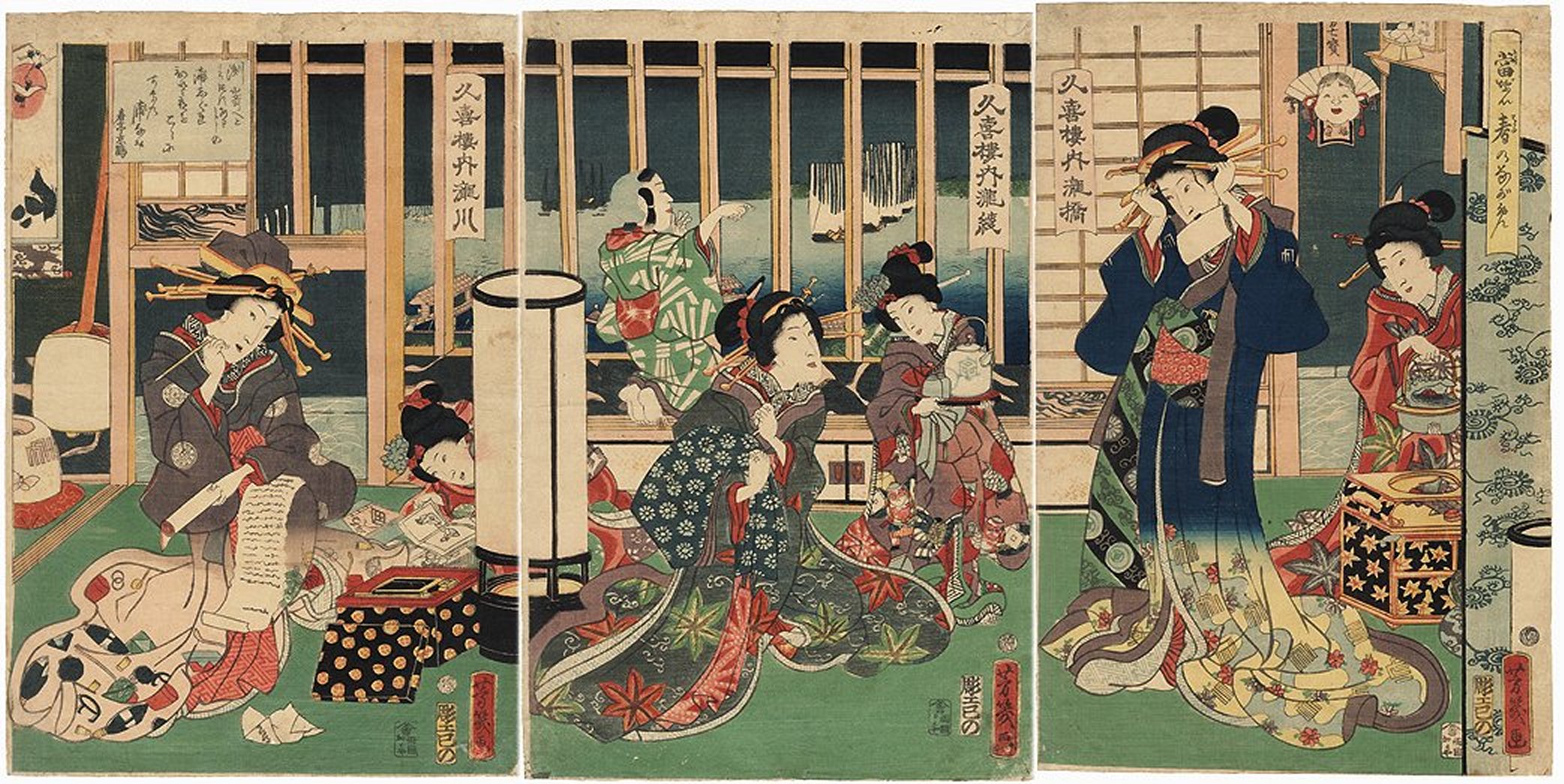 |
YOSHIIKU
(1833 - 1904)
"The Seven Lucky Gods" |
YOSHIIKU (1833 - 1904)
"Ichikawa Ichizô-III and Nakamura
Tsurusuke-IV with Musicians"
|
YOSHIIKU
(1833 - 1904)
"A Modern Spring View: Courtesans Takihashi,
Takiaya, and Takigawa of the Kuki-ro" |
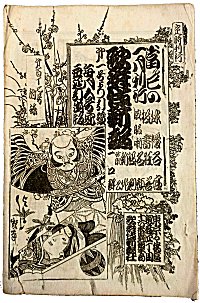
|
|
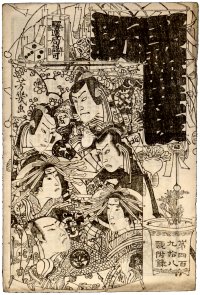 |
YOSHIIKU (1833 -
1904)
"Kabuki Shinpo No.117-2"
Series: Kabuki Shinpo (Theatre Manga),
1881
|
|
YOSHIIKU (1833 -
1904)
"Kabuki Shinpo No.498"
Series: Kabuki Shinpo (Theatre Manga),
1885 |
|
|
|
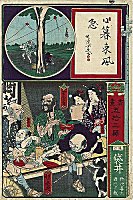 |
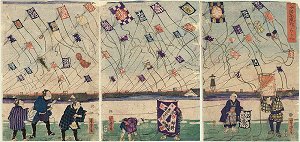 |
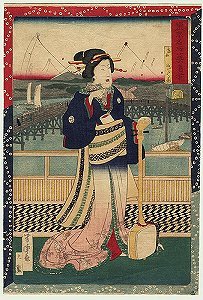 |
YOSHITORA (active 1840 - 1880) and
Kyosai (1831 - 1889)
"Fukuroi in Totomi Province:
Drunken Games of Yaji and Kita"
Series: Calligraphy and Pictures for the
Fifty-three Stations of the Tokaido, 1872 |
YOSHITORA (active 1840 - 1880)
"Kodomo no Takoage Kurabe"
(Kite Flying Competition by Children)
|
YOSHITORA (active 1840 - 1880)
"Beauty with a Shamisen"
|
|
|
|
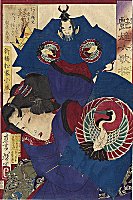 |
|
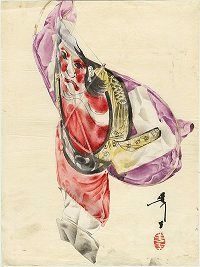 |
YOSHITOSHI (1839 -
1892)
"Beauty with a Crane Kite"
Series: Six Poems of Love and Valor (Enyu
Rokkasen) |
|
YOSHITOSHI (1839 -
1892)
"Painting of a Yakko Kite"
|
|
|
|
|
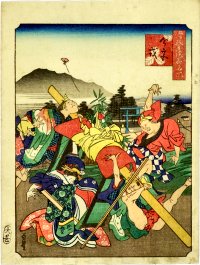
|
|
|
Utagawa YOSHITOYO
(1830-1866)
"A Humorous Naniwa Spot: Imamiya Ebisu"
|
|
|
|
|
|
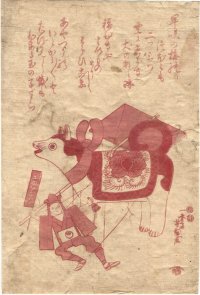
|
|
|
YOSHITSUNA
(active1848~1868)
"Hozo-e with Toys"
|
|
|
|
|
|
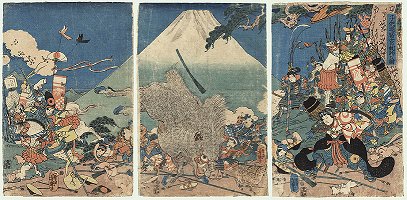
|
|
|
YOSHITSUYA (1822 - 1866)
"Boys Reenacting Yoritomo's Hunt at
Mt. Fuji"
|
|
|
|
|
|
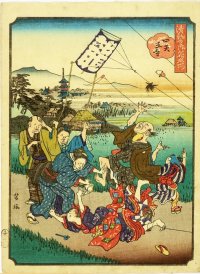
|
|
|
YOSHIUME
(1819~1879)
"Shitenno-ji" |
|
|
|
|
|
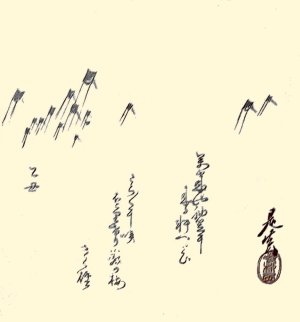
|
|
|
Zeshin (SHIBATA
Zeshin) (1808 - 1891)
"Kite Surimono" |
|
|
|
|
| |
|
|
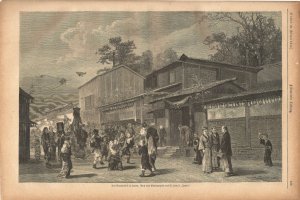
Kite Flying in Japan in the middle of the 19th
Century
"Steel engraving,
"Illustrierte Zeitung" No. 1599,
February 21,
1874,
Verlag J. J. Weber
Leipzig (Germany)
|
|
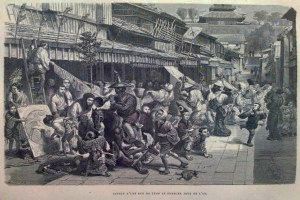
Kite Flying in Edo on January 1st
"Steel engraving,
French illustrated paper
|
|
Non Identified Artists
|
|
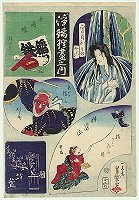 |
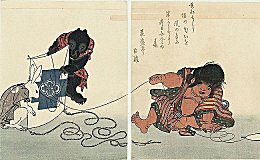 |
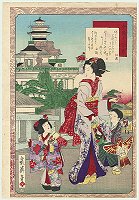 |
Unknown Artist (1866)
"Kabuki Characters and Kite"
(Harimaze) |
Unknown Artist (19th Century)
"KintaroTugging On A Kite String"
(Surimono)
|
Unknown Artist (Meiji Era)
"New Year's Day Amusements" |
|
|
|
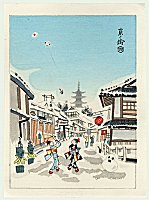 |

|

|
Unknown Artist
(20th Century)
"Children in Snowy Street at New Years"
(Greeting Card)
|
Unknown Artist
(20th Century)
"Boys Playing Kite in Front of a Village at
New Year"
(Greeting Card)
|
Unknown Artist
(20th Century)
"New Year's Fans, Yakko and Edo kite, Tiger
and Daruma Toy, and Hanetsuki"
(Greeting Card)
|
|
|
|
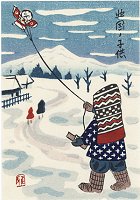
|
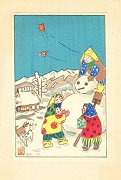 |
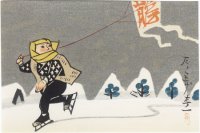
|
Unknown Artist (20th
Century)
"'Winter Scene with Boy and Yakko Kite'"
|
Unknown Artist (possibly
Bakufu Ohno) (about 1950)
"Children with a Snowman at New Year"
(Greeting Card)
|
Unknown Artist (20th
Century)
"Skating Boy with Edo Kaku Kite"
|
|
|
|
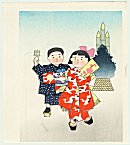
|
|
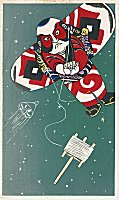
|
Unknown Artist
(20th Century)
"Boy with Kite Reel and Yakko, Girl with
Hanetsuki"
(Greeting Card) |
|
Unknown Artist
(20th Century)
"Yakko Kite, Kite Reel and Space Rocket"
(Greeting Card)
|
|
|
|
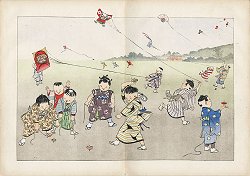 |
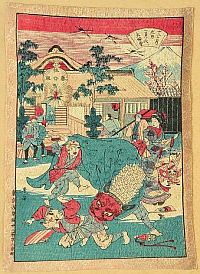
|
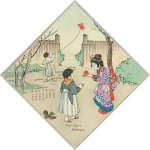 |
Unknown Artist(s)
(19h Century)
"Boys and Girls Playing Kites and
Spinning Tops"
(Offset lithographs from Meiji Era book on
"Japanese Children") |
Unknown Artist
"Lion Dance"
(~1860) |
Unknown Artist
"New Year's Day Kite Flying"
Calendar leaf
(1890 ~ 1910)
|
|
|
|
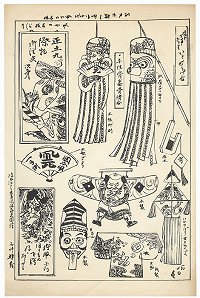 |
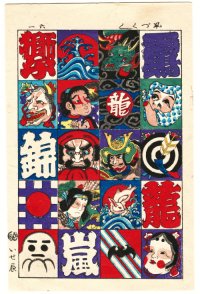 |
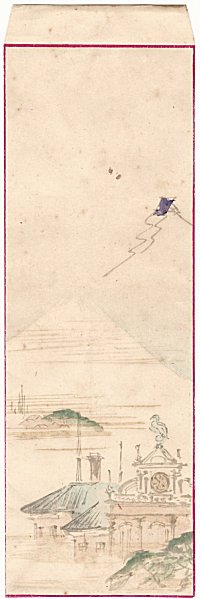 |
Unknown Artist
'Toy Print with Kite'
(Meiji Era, 1868 - 1912)
|
Unknown Artist
'Kites All Over'
(Meiji Era, 1868 - 1912)
|
Unknown Artist
'Edo-Kite Envelope'
(Late Meiji Era / Early Taisho Era, 1910
- 30)
|
|
|
|
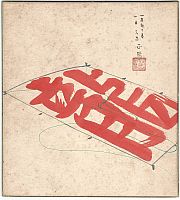
|
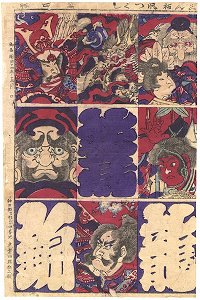
|
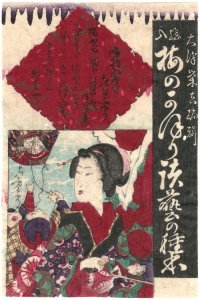
|
Unknown Artist
'Dragon Kite'
(prior to 1949) |
Unknown Artist
'New Collection of Kites'
(1890 ~ 1910)
|
Unknown Artist
'Edo Kaku with Warrior Face'
(late 19th century) |
|
|
|
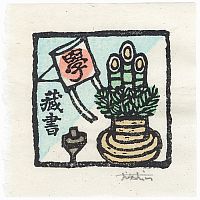
|
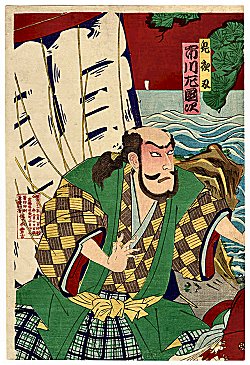
|
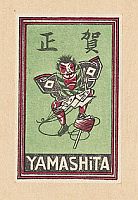
|
Unknown Artist
'Ex Libris'
(1940 ~ 1960) |
Unknown Artist
"Ichikawa Sadanji with a
Kite"
(1888)
|
Unknown Artist
"New Year's Day Kite Flying"
(1890 ~ 1910) |
|
|
|
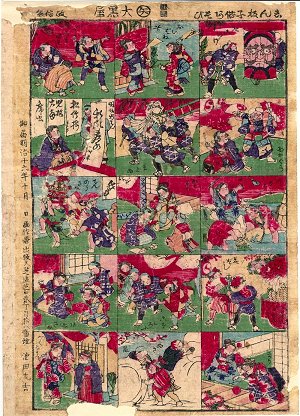
|
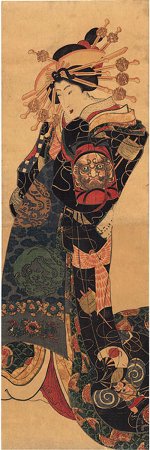
|
|
Unknown Artist
"Sugoroku with Daruma Kite"
(1896) |
Unknown Artist
"Courtesan with Kite Kimono"
(1890 ~ 1910) |
|
|
|
|
|
|
|

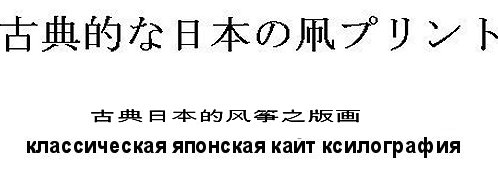
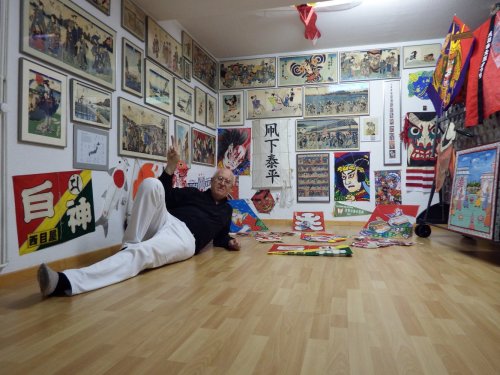

















_Vol.6%C2%A0N.1%20(Shang)-Seite7-und-8-kl.jpg)


























































































































































































































